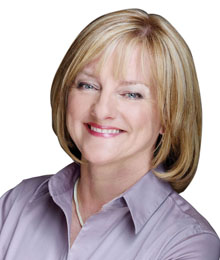Raise the $teaks of Personal Finance
February 15, 2012 by Alison Griffiths
Filed under Special Features
 Years ago, the late Paul Newman, he of the stunning blue eyes and insouciant stare, was asked if he’d ever been tempted to stray from his wife, actress Joanne Woodward. Newman simply smiled and said, “Why would I go out for hamburger when I have steak at home?” With apologies to Newman, I’m borrowing his comment and applying it to the investment universe: If you can have investment steak at home, why would you bother going out for ground beef?
Years ago, the late Paul Newman, he of the stunning blue eyes and insouciant stare, was asked if he’d ever been tempted to stray from his wife, actress Joanne Woodward. Newman simply smiled and said, “Why would I go out for hamburger when I have steak at home?” With apologies to Newman, I’m borrowing his comment and applying it to the investment universe: If you can have investment steak at home, why would you bother going out for ground beef?
Exchange traded funds (ETFs) are prime meat for your portfolio, while actively managed mutual funds are, for the most part, ground beef. ETFs give you a lot less fat for the money. Not only are they cheaper – the management fees (MERs) start as low as 0.07 per cent and most are under 0.5 per cent compared to the MERs of Canadian mutual funds which average 2.5 per cent annually – but they also produce a better result.
Roughly 75 per cent of mutual funds fail to outperform their comparable benchmark index over time. In comparison, most ETFs match their benchmark index 100 per cent of the time.
If you have only a 25 per cent chance of doing better than a given index – and you are going to pay through the nose for that underperformance – why wouldn’t you just buy a piece of the index itself with an exchange traded fund? Passive ETFs are “copies” of a given index. There are also actively managed ETFs, but I believe passive is the way to go for most investors.
An index is simply a basket of stocks or bonds that serves as a barometer for all or part of a stock market in a specific category. For example, the S&P/TSX Index consists of 60 of Canada’s largest companies, while the S&P 500 holds 500 of America’s largest companies.
Every ETF has a ticker symbol, which you can use to look up information online or in print. You can purchase them through a broker or a discount broker, just as you would shares in a company on a stock exchange. In Canada, the providers of passive ETFs are:
• iShares and Claymore – ca.ishares.com
• BMO – www.etfs.bmo.com
• Invesco Powershares – www.powershares.ca
• Horizons Betapro – www.hbpetf.com
• Vanguard – www.vanguardcanada.ca
• RBC – www.rbcgam.com/etfs
It’s easy to bite into the filet mignon of personal finance – all you need is just three or four ETFs to create a simple, low-cost and transparent portfolio.
Biography
Alison Griffiths is a financial journalist, television host of W Network’s Maxed Out and author of national bestseller Count on Yourself: Take Charge of your Money (Simon and Schuster, 2012).
www.alisongriffiths.ca
*Text by Alison Griffiths adapted from her book, Count on Yourself: Take Charge of your Money.









Comments
Feel free to leave a comment...
and oh, if you want a pic to show with your comment, go get a gravatar!